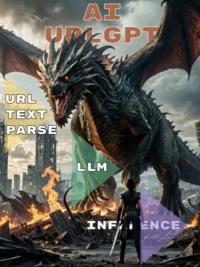- Pioneering architects like Zaha Hadid’s studio are actively using AI tools to enhance and inspire their design process.
- Designers such as Tim Fu are translating AI concepts into physical products via collaboration with manufacturers.
- AI has limitations around technical specifications, so human oversight is still needed to build designs.
- Some viral AI art has led to real-world commissions, but not all concepts translate easily.
- Most innovators see AI as a collaborative tool rather than outright replacement for human designers.
- The technology allows designers to explore bolder, more unexpected ideas than ever before.
Artificial intelligence (AI) is transforming design and architecture in profound ways. What began in 2015 with Google’s unsettling Deep Dream images has evolved into sophisticated generative tools like DALL-E, Midjourney and Stable Diffusion. These AI systems can now produce convincing mockups, visualizations and creative concepts on demand, using text prompts provided by human creators.
AI Design – How Generative Tools Are Reshaping Creative Workflows

Some architects and designers view AI warily, seeing it as competition encroaching on their livelihoods. But pioneering studios are embracing it as a collaborative tool to enhance workflows and envision bold new possibilities. Zaha Hadid Architects director Patrik Schumacher described feeling “very empowered” by AI in an April 2022 interview, explaining how they use it to iterate and workshop designs. Tim Fu, formerly of Zaha Hadid, has continued this approach in his own practice. Together with manufacturers like Mavimatt, he has translated AI-generated concepts into physical products like the futuristic Chromatic chair.
AI’s rapid image generation excels at sparking early-stage inspiration, but still has limitations when it comes to technical specifications required for construction and manufacturing. This is why human oversight remains essential for bringing these visions to life. Design Academy Eindhoven graduate Juul van den Heuvel made this point with his 2021 “(A)I Designed a Chair” project, for which he used Dall-E and Midjourney to design a chair, then meticulously built it by hand from wood.
Some designers are managing to turn social media buzz for their AI art into real-world commissions. Carlos Bañon’s abstract staircases went viral on Instagram and attracted a UK client – he’s now exploring large-scale fabrication. Andrés Reisinger’s “Hortensia” chair similarly made the leap from digital artwork to a 2022 Moooi production. However, the technology still poses challenges in translating concepts to reality, as Reisinger found when attempting an AI-inspired installation in Miami.
Ultimately, most innovators in this space see AI as an assistive tool rather than a sole design source. Hannes Peer uses it to spark ideas but believes physical spaces possess a richness no simulation can replicate. Charlotte Taylor has found AI invaluable for visualizing architectural projects, but still works in an hands-on way with physical materials when designing real interiors.
By providing endless iterations and variations, AI allows designers to push creative boundaries further than ever before. But human creativity, craft and decision-making remain essential to guide these tools to design excellence. Rather than outright competition, this suggests a future of augmented and collaborative creativity between humans and machines.
Two products launched right now:
AI Agent: https://orbitmoonalpha.com/shop/ai-tool-agent/
AI Drawsth: https://orbitmoonalpha.com/shop/ai-tool-drawsth/
Private: AI Tool Agent
One purchase equals 1 yr License. Boost your productivity with our AI tool!
